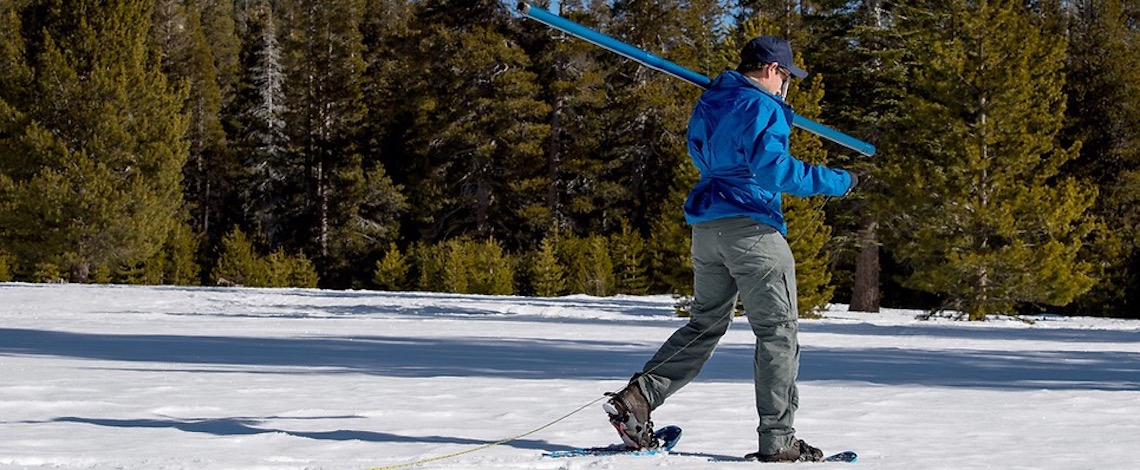
John King, Water Resource Engineer of the California Department of Water Resources, Snow Survey Section, walks out with the long aluminum snow depth survey pole for the first DWR snow survey of the 2019 season at Phillips Station in the Sierra Nevada Mountains.
Written by Edward Smith
The first allocation of the water year has been announced with drought conditions prompting the Department of Water Resources to give nearly 0% to users.
The focus for water use in the coming water year would be for health and safety, managing salinity in the Sacramento-San Joaquin Delta, protecting endangered species and storage, with water for south-of-Delta users only if hydrology improves.
This is the first time the State Water Project has given a 0% allocation, said Karla Nemeth, director for Department of Water Resources.
Water in Oroville Dam stands at 30% capacity, holding 1 million acre-feet of water. Nemeth expects carryover water to hit 1.1 million acre-feet. A typical amount is 1.6 million acre-feet.
About 70% of water that travels the 444-mile California aqueduct feeding the Central Valley, South Bay Area and Southern California goes for municipal and industrial uses. The remaining 30% goes for irrigation.
Nemeth said they have received requests so far for 340,000 acre-feet of water to meet health and safety standards, including drinking water, sanitation and fire suppression.
Of the 29 contractors, seven have requested special allowances for health and safety needs — two in Northern California and five users in the San Luis Reservoir.
Nemeth expects to be able to meet 90% of that need.
The other priority for DWR is maintaining salinity levels in the Delta. Keeping salt water from creeping from the Bay requires about 600,000 acre-feet of water, said Nemeth. Doing so helps maintain safety standards for cities such as Stockton, said Nemeth. They’ll also keep in place a barrier they installed in 2020 to help prevent seawater intrusion in the Bay Area.
While the Department of Water Resources outlined that protection of endangered species is a priority, Nemeth said that when conditions are this dry, the Endangered Species Act does not affect pumping “because there’s no water to pump.”
“Frankly, we’re really focused on the hydrology and how to manage it. When there’s no water in the system, the environment is going to suffer as well,” Nemeth said.
The announcement comes at a time the State Water Board will vote on a recommendation to reduce water usage for households to 47 gallons a day by 2025 and 42 gallons a day by 2030. The current recommendation is 55 gallons a day. The recommendation would be implemented at the water-supplier level rather than to individual households, said Eric Oppenheimer, board member for the State Water Board. The State Water Board hopes to eliminate wasteful water uses such as watering when it’s raining or after a rain and not using a hose to wash a car unless it has a nozzle.







